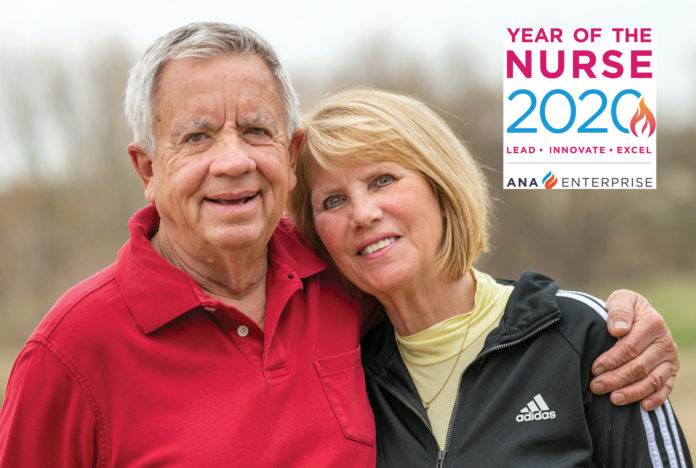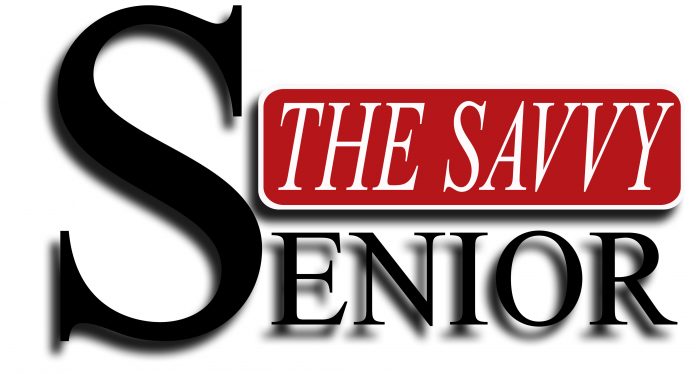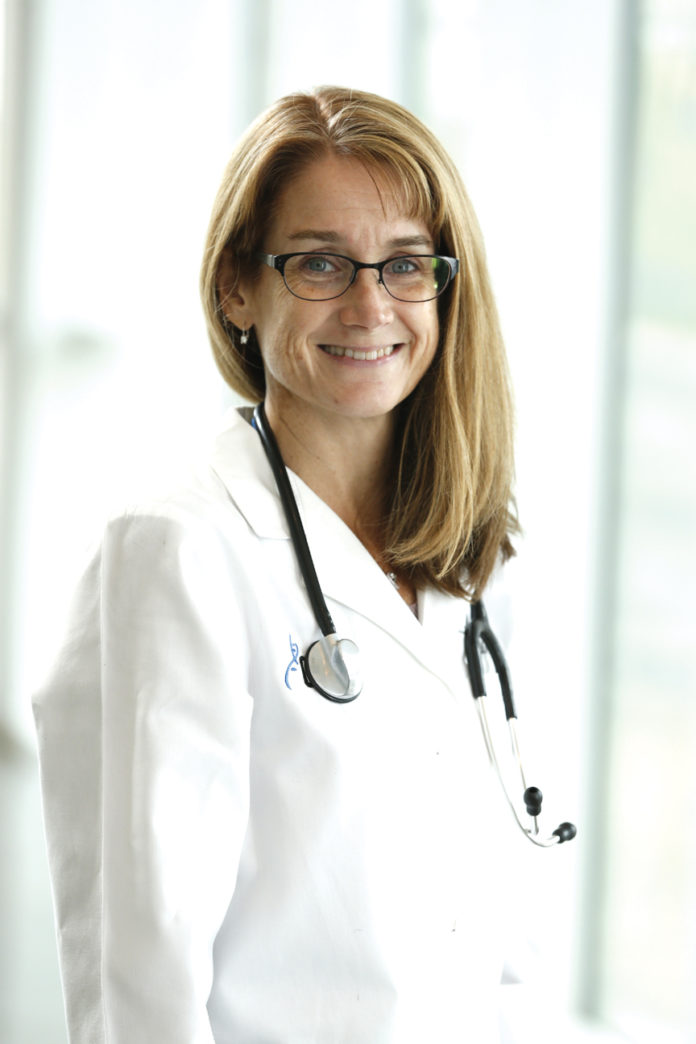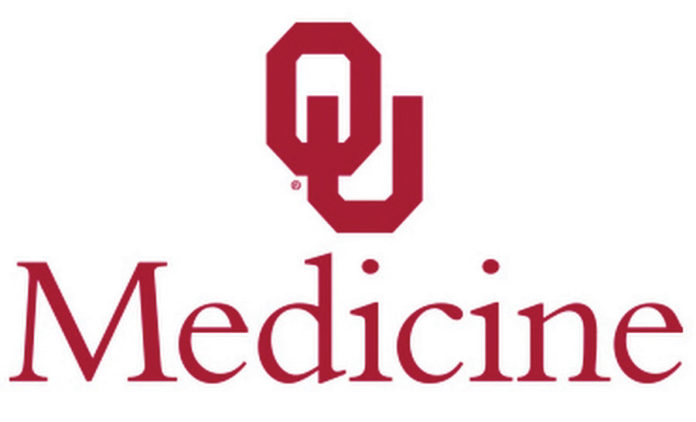Mark Rolfe, M.D., is a Lung Transplant and Critical Care Pulmonologist at INTEGRIS Baptist Medical Center. He says we are starting to see an increase in COVID-19 cases requiring hospitalization. Many of those end up in the intensive care unit, where he works.
“The first time I walked into the room of a patient known to have COVID-19, I paused at the door,” admits Rolfe. “I was a little frightened at facing this disease for the first time.”
It was the first case to be diagnosed at INTEGRIS Baptist, and Rolfe reveals it brought back memories from early on in his career. “I grew up in medicine at the beginning of the AIDS epidemic and remember the hysteria around that diagnosis and all the precautions people took to not catch it. We initially wore hazmat suits with those patients and put them in different wings of the hospital.”
He continues, “It feels like I am living those days from my medical school years all over again. This disease, unlike HIV, is very contagious though. A person can spend five to six minutes with someone who is infected and catch this disease.”
In Rolfe’s ICU, every patient there either has the virus or is considered high risk. But despite the apparent danger associated with COVID-19, Rolfe feels his unit is very safe. “We have developed protocols that protect us, and everyone is very careful,” he says. “I feel I am more likely to get this disease shopping at the grocery store than in my hospital or ICU.”
He further explains, “In the public, there are unknown asymptomatic carriers who are very contagious and just don’t know it. In the hospital, I know where the danger is, and I am prepared to deal with it safely.”
Rolfe understands the importance of his work. “We are doctors. We are supposed to take care of the ill to the best of our ability. It is a challenge, but it is also a calling. God gave us these gifts for a reason. It’s time to step into the breach and use them.”
But don’t call him a hero, he says that honor is reserved for America’s finest. “Doctors are not heroes. We are doing what we were trained to do. Generations of physicians have fought off diseases throughout the years. It is our legacy. It is why we are respected in this society. The efforts to fight this disease and help people through it is the price of that respect,” states Rolfe.
“The people who put on a uniform and protect our country are the heroes.
Masks, gloves and hand washing will stop a virus. Nothing stops a bullet, a missile, a grenade, or a knife. The police and military are our heroes.”
However, Rolfe does acknowledge that the novel coronavirus has completely altered life as we knew it. He says each one of us has the power to reclaim it, we just have to work together to do so. “It’s all been said before, but it is worth repeating – wash your hands, don’t touch your face, avoid crowds and stay home to stay safe. Do what you can now, so you don’t become one of my patients later.”
Facing Frightening Viruses: A Physician Perspective
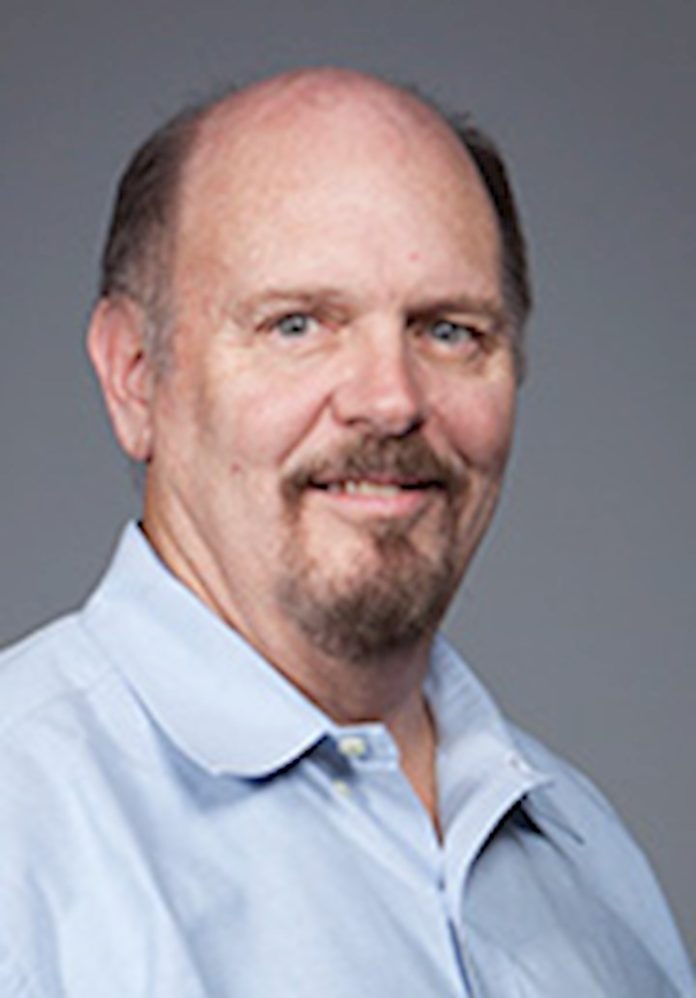
Trial by Fire: A First Year ER Nurse Describes COVID-19
Talk about on the job training, Hailee Stull became a registered nurse less than a year ago. Now, she finds herself working on the frontlines of a worldwide pandemic.
“I never imagined something like this would happen in my lifetime, much less my first year on the job.”
Stull works in the Emergency Department at INTEGRIS Southwest Medical Center. She says it has been amazing to watch her team rise to the challenge. “Policies and procedures for the COVID-19 situation have been frequently changing since the beginning of the outbreak. We’re dealing with changes sometimes from shift to shift and doing our best to keep up and stay informed.”
She adds, “I’ve watched my coworkers adapt and thrive with every change thrown our way. It has been fascinating to watch and experience the creativity, teamwork and generosity on full display.”
Stull says patients and visitors have been impacted by the ever-changing environment as well. “They’ve had to deal with visitor restrictions, symptom screenings at every entrance and waiting in their cars to be seen. This crisis has proven to me just how resilient we all can be.”
But she admits caring for coronavirus patients on top of other emergencies can be a juggling act. “My role as an ER nurse is to not only care for COVID-19 patients, but to also care for other emergent patients. People are still breaking bones and having strokes. Those things don’t stop just because of a virus.”
Stull’s sense of duty helps her push past the fear. “Dealing with the unknown is always scary. I have seen what this virus has the capability to do to people. It is frightening to put myself in direct contact with this virus,” she reveals.
However, as a nurse this isn’t the only frightening disease I am in contact with. I do the best I can to protect myself while caring for my patients.”
Stull says she has always wanted to be a nurse and nothing, not even a pandemic, can change that. “I have always been a caregiver at heart and always will be – long after this pandemic is a thing of the past.”
Behind the Mask: A nurse’s view
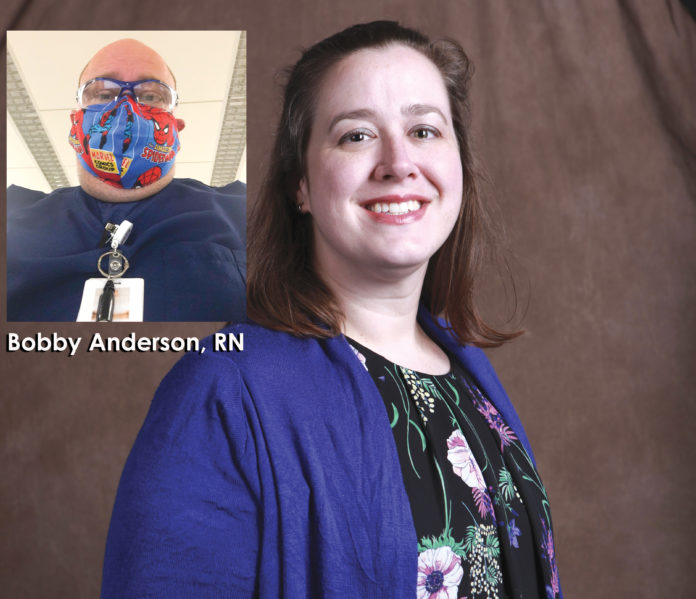
story and photo by Bobby Anderson, Staff Writer
At the time, none of us knew.
The patient we received from the emergency room was breathing 40-50 times a minute and maxed out on oxygen.
The bipap – the last line of oxygenation before a ventilator – wasn’t keeping up and the patient was struggling.
We knew the Coronavirus – or more technically, Covid-19 – was a thing.
Like all hospitals around us, there were whispers of a handful of patients on our campus being tested for it.
But they were in the ICU or on a separate floor, being taken care of by nurses with special personal protective equipment, wearing helmets and facemasks with powered air-purifying respirators.
Meanwhile, our patient was in respiratory distress.
Lab tests, chest x-rays and CT scans were reviewed along with a late call about the patient’s history.
The situation called for an ICU level of care.
The call from the patient’s doctor revealed COVID 19 was highly suspected.
That’s when COVID-19 became real for all of us in the room.
Outside the room, five respiratory therapists, the house supervisor and my charge nurse huddled together.
Eyebrows and voices raised.
The people I looked to most in the hospital for answers were without them.
Not only that, they were scared.
The bipap ventilation system was effectively aerosolizing the already contagious virus.
In layman’s terms, the high pressure flow made the viral particles even smaller and easier to transmit.
The surgical masks we were all wearing aren’t designed to be effective against the virus.
Two days later we learned the patient died while on a ventilator.
The day after that we learned results were positive for COVID-19.
Direct exposure was declared and all of us barred from returning to work for 14 days.
Nearly two weeks later we’re still learning.
Now I take my temperature twice a day and monitor for symptoms while logging everything online.
A fever over 100 degrees. A cough. Vomiting and diarrhea. Body aches.
All are symptoms of infection.
I haven’t been tested nor will I be tested unless I develop symptoms.
But my goal throughout this pandemic isn’t to complain or blame others. My goal, when I’m not at the bedside after my quarantine ends, is to highlight individuals who are helping turn the tide.
One of those individuals making a difference is Becky Lewis.
Lewis RN, MSN, CIC, is the system director of infection prevention for INTEGRIS, Oklahoma’s largest health system.
This virus has affected us all in different ways: personally, professionally and emotionally.
In Becky’s own words:
I see my family less and work more.
It is necessary but it is hard.
My five-year-old asks me when the sickness will be gone and my almost two-year-old cries when I come home because he knows that means it’s time to go to bed.
I come home and immediately start looking at any new common guidance documents from the CDC and the like to see if there were any revisions or updates overnight.
Every day I identify three to five items to focus on and work toward providing recommendations or guidance for each and relay that information to the system. The amount of updated or new information to digest is astounding.
I am currently on day 49 of non-stop COVID work. I am tired to my bones but know what I am doing is necessary and important work. I am working to keep our patients and caregivers safe.
I worry about the fear factor for our teams on the front line and the misinformation that can feel stronger than science.
My first week on the job as an infection preventionist was during H1N1 and it was wild, but we didn’t have the same social media presence that we do now and it is a strong element to work with and around.
RN’s First Love to Last Love – Editor’s Note: As part of the American Nurses Association “Year of the Nurse” campaign, National Nurses Month begins May 1st. During This very difficult time and in support of Oklahoma Nurses – we have devoted a large portion of our publication to nurses throughout the state. Please join us in saying THANKS!
story and photo by Vickie Jenkins, Staff Writer
Growing up in Holdenville, OK in the late sixties, people considered this as golden town living; a safe place to live, small in size and friendly folks. At the tender age of twelve, Barbara McDougal was like most girls, beginning to notice those once dreaded species called boys. She began to push her childish ways to the side, knowing that she would soon be a teenager. Barbara took notice of a certain boy that had just moved to the neighborhood, only one block away from her. She peeked out the window each time he walked by her house as he adventured out, exploring the mighty streets in the neighborhood.
As Barbara and her girlfriends gathered, Barbara found herself secretly pointing this boy out, telling them how cute he was, along with a firm statement of, “Someday, that boy is going to be mine.”
It wasn’t long before Barbara became more interested in this new boy in town. She would casually be sitting on the front porch at the most convenient planned out times. It wasn’t long before this boy walked by her house, stopping to introduce himself. It was just like one of those love stories on the big screen; the two of them stood there, gazing into each other’s eyes, as though a light suddenly came on. They knew the love bug had gotten to both of them. They had been love-struck!
His name was Bobby Aldridge and he was sixteen-year- old. He drove around town in his blue ‘57 Chevy and Barbara remembers the car being far out! After a few visits between the families and getting to know each other a little better, Barbara was allowed to meet Bobby for lunch at the local Dairy Queen. They spent their time holding hands as they listened to the juke box play some of their favorite music; Donavan’s Hurdy Gurdy Man and Tommy James and the Shondells. Soon, the relationship between the two of them progressed and they were inseparable!
In this time and age, when a boy liked a girl, he gave her a token of his love by giving her a drop, a necklace with the boy’s initials on it; Bobby’s initials being RLA. Now, they were going steady! The relationship between Barbara and Bobby was going perfect!
It was in 1970, that Barbara got the news that Bobby and his family were moving from Holdenville, to Oklahoma City, OK. No, this couldn’t happen! Both families hated to see the sweet couple separate but it had to be. Bobby’s dad had taken on a new job in Oklahoma City, OK. After the move, frequent visits were made by Barbara as her parents would drive to OKC, allowing Barbara to spend as much time as possible with Bobby. Little did they know that their relationship would be coming to an end in the near future.
Life brings changes when we least expect it and our paths take off in different directions.
Barbara graduated in 1974 and attended Oklahoma State University. This was a whole new world for her; college, new friends and discoveries of being an adult. Barbara became an LPN in 1978, working in Stillwater, OKC and even moved to Dallas, Texas for a while. Barbara realized that she needed to go back to school for her RN. She moved back to OKC in 2007 to begin RN school at OSU/OKC.
Time moves on. Barbara had just finished one of her classes and decided to go a near-by restaurant for lunch. As she sat at a booth, she noticed a gentleman sitting at a booth, across the room, not far from her. Taking a second look, he looked very familiar. Was it Bobby? With a feeling of nervousness and a little flushed, she got up and walked over to him. Yes, it was Bobby! They enjoyed talking to each other and reminisced about old times. Their love story picked up where they left off.
Barbara and Bobby were married on October 7, 2017. Barbara wore his initials, RLA as a charm on her charm bracelet in their wedding. This was the something old for her wedding.
Now, it’s the year 2020. Bobby is a homebuilder in OKC and Barbara is an RN at Mercy Rehab Hospital. Today, they still hold hands as they listen to some of their favorite music; Donavan’s Hurdy Gurdy Man and Tommy James and the Shondells.
From first love to last love, fifty-one years later and the love is still growing.
SAVVY SENIOR: Do Pneumonia Vaccines Protect Seniors from Coronavirus?
Dear Savvy Senior, Do currently offered vaccines against pneumonia provide seniors any protection against the coronavirus disease? I’ve always been bad about getting vaccinated, but this coronavirus pandemic is causing me to change my thinking. Pro-Vax Patty
Dear Patty,
This is a great question. Because the coronavirus (COVID-19) attacks the lungs and respiratory system, many readers have asked whether the pneumonia vaccines, which are administered to millions of patients each year, might protect someone if they contract the coronavirus.
But unfortunately, the answer is no. Vaccines against pneumonia, such as pneumococcal vaccine and Haemophilus influenza type B vaccine, do not provide protection against the new coronavirus.
This virus is so new and different that it needs its own vaccine. Researchers are in the process of rapidly developing a vaccine against COVID-19, but it is expected to take at least a year before it’s ready.
Having said that, you should also know that there are several other important vaccines the Centers for Disease Control and Prevention (CDC) recommends that all seniors should get up to date on after the coronavirus pandemic dies down. Here’s a rundown of what they are, when you should get them, and how they’re covered by Medicare.
Flu vaccine: While annual flu shots are recommended each fall to everyone, they are very important for older adults to get because seniors have a much greater risk of developing dangerous flu complications. According to the CDC, last year up to 647,000 people were hospitalized and 61,200 died because of the flu – most of whom were age 65 and older.
To improve your chances of escaping the seasonal flu, this September or October consider a vaccine specifically designed for people 65 and older. The Fluzone High Dose or FLUAD are the two options that provide extra protection beyond what a standard flu shot offers. And all flu shots are covered under Medicare Part B.
Pneumococcal vaccine: As previously stated, this vaccine protects against pneumonia, which hospitalizes around 250,000 Americans and kills about 50,000 each year. It’s recommended that all seniors, 65 or older, get two separate vaccines – PCV13 (Prevnar 13) and PPSV23 (Pneumovax 23). Both vaccines, which are administered one year apart, protect against different strains of the bacteria to provide maximum protection. Medicare Part B covers both shots if they are taken at least a year apart.
Shingles vaccine: Caused by the same virus that causes chicken pox, shingles is a painful, blistering skin rash that affects more than 1 million Americans every year. All people over age 50 should get the new Shingrix vaccine, which is given in two doses, two to six months apart. Even if you’ve already had shingles, you should still get this vaccination because reoccurring cases are possible. The CDC also recommends that anyone previously vaccinated with Zostavax be revaccinated with Shingrix because it’s significantly more effective.
All Medicare Part D prescription drug plans cover shingles vaccinations, but coverage amounts, and reimbursement rules vary depending on where the shot is given. Check your plan.
Tdap vaccine: A one-time dose of the Tdap vaccine, which covers tetanus, diphtheria and pertussis (whooping cough) is recommended to all adults. If you’ve already had a Tdap shot, you should get a tetanus-diphtheria (Td) booster shot every 10 years. All Medicare Part D prescription drug plans cover these vaccinations.
Other Vaccinations
Depending on your health conditions, preferences, age and future travel schedule, the CDC offers a “What Vaccines Do You Need?” quiz at www2.CDC.gov/nip/adultimmsched to help you determine what additional vaccines may be appropriate for you. You should also talk to your doctor during your next visit about which vaccinations you should get.
To locate a site that offers any of these vaccines, visit VaccineFinder.org and type in your location.
Send your senior questions to: Savvy Senior, P.O. Box 5443, Norman, OK 73070, or visit SavvySenior.org. Jim Miller is a contributor to the NBC Today show and author of “The Savvy Senior” book.
Tips on staying healthy in an unhealthy time
Isolation has become the new normal as we all do our part to end the spread of Covid-19. But while we’re separated, experts at the Oklahoma Medical Research Foundation say there are important steps we can take to maintain our psychological and physical health.
1. Stick to a schedule
The lack of a set daily routine can be disruptive. Resist the urge to stay up late and sleep in, as it disrupts your body’s circadian rhythms, said OMRF immunologist Eliza Chakravarty, M.D.
“Sleep deprivation also causes stress hormones like cortisol to rise, signaling the body to go into fat-storage mode by slowing your metabolism,” said Chakravarty. “And when you’re sleepy, you eat more, which can put you on a slippery slope.”
2. Get moving
Research shows that even 30 minutes of moderate exercise lowers blood pressure, strengthens bones, improves mood and helps maintain muscle mass, said OMRF researcher Holly Van Remmen, Ph.D.
“Getting outdoors when the sun is shining boosts your physical and mental wellbeing,” said Van Remmen. “Do some gardening, mow the lawn, go on a long walk—whatever gets you off the couch.”
3. Say no to junk food
“Resist the temptation to graze all day long out of boredom,” said Chakravarty. “If you snack, have healthy options on hand like veggies and hummus, fruit or nuts.”
It’s no secret that obesity has a severe negative impact on health in a variety of ways. And that can be compounded by coronavirus, which appears to take a severe toll on people suffering from obesity-related conditions like heart disease and diabetes.
4. Stay connected
Sunshine and fresh air can work wonders for your mood, but so can maintaining contact with friends and family—from a distance. “Pick up the phone, send emails or write letters to stay in touch,” said OMRF President Stephen Prescott, M.D. “Even though we’re not together physically, we don’t have to be alone.”
5. Take a news break
“There’s a difference between staying informed and dwelling on never-ending commentary and speculation,” Chakravarty said. “Instead, go sew, paint, learn a hobby or rediscover an old one. Be creative.”
We don’t know when this pandemic will end, said Chakravarty. “But how you come out when it’s over depends a lot on the decisions you make now.”
OU Medicine, OU Health Sciences Center to Use CompSource Mutual Donation to Assist Healthcare Providers
OU Medicine and its academic partner, the University of Oklahoma Health Sciences Center, recently received $100,000 from CompSource Mutual Insurance Company to assist healthcare providers on the front line of treating patients during the COVID-19 pandemic.
To avoid potentially exposing their families to the virus, many healthcare providers are not going home at the end of a long workday, but are staying away from home for everyone’s safety. The donation from CompSource Mutual will be used to provide meals and a place to stay for those physicians, nurses and other healthcare providers.
“We’re grateful to CompSource Mutual for their generous support of our healthcare team to combat this pandemic,” said Dr. Dale Bratzler, Enterprise Chief Quality Officer of OU Medicine. “This donation will fund temporary housing and food for OU Medicine and OU Health Sciences Center team members living away from home to protect their families from potential exposure to COVID-19.”
CompSource Mutual Insurance Company, an Oklahoma-based business that provides workers’ compensation coverage, donated a total of $250,000 in Oklahoma to assist medical personnel and families coping with lost wages and other hardships because of the pandemic. Other recipients include the Tulsa Area COVID-19 Response Fund formed by the Tulsa Area United Way and the Tulsa Community Foundation, as well as the United Way of Central Oklahoma’s COVID-19 Response Fund.
“Our policyholders include many Oklahoma businesses that are currently experiencing the emotional, physical and financial tolls of this pandemic,” said CompSource Mutual President and CEO Jason Clark. “We are committed to being a reliable partner in our communities’ responses, which we first demonstrated earlier this month by implementing measures to help CompSource policyholders who are struggling financially to pay their premiums. This donation is the next step and supports our guiding principle to improve the communities in which we live and work. I am grateful to our leadership team for approving this vitally important assistance for three organizations who are working directly in support of first responders, medical professionals and affected families in our state.”
Social Security Combined Trust Funds Projection Remains the Same Says Board of Trustees
Projections in 2020 Report Do Not Reflect the Potential Effects of the COVID-19 Pandemic
The Social Security Board of Trustees today released its annual report on the long-term financial status of the Social Security Trust Funds. The combined asset reserves of the Old-Age and Survivors Insurance and Disability Insurance (OASI and DI) Trust Funds are projected to become depleted in 2035, the same as projected last year, with 79 percent of benefits payable at that time.
The OASI Trust Fund is projected to become depleted in 2034, the same as last year’s estimate, with 76 percent of benefits payable at that time. The DI Trust Fund is estimated to become depleted in 2065, extended 13 years from last year’s estimate of 2052, with 92 percent of benefits still payable.
In the 2020 Annual Report to Congress, the Trustees announced:
* The asset reserves of the combined OASI and DI Trust Funds increased by $2.5 billion in 2019 to a total of $2.897 trillion.
* The total annual cost of the program is projected to exceed total annual income, for the first time since 1982, in 2021 and remain higher throughout the 75-year projection period. As a result, asset reserves are expected to decline during 2021. Social Security’s cost has exceeded its non-interest income since 2010.
* The year when the combined trust fund reserves are projected to become depleted, if Congress does not act before then, is 2035 – the same as last year’s projection. At that time, there would be sufficient income coming in to pay 79 percent of scheduled benefits.
“The projections in this year’s report do not reflect the potential effects of the COVID-19 pandemic on the Social Security program. Given the uncertainty associated with these impacts, the Trustees believe it is not possible to adjust estimates accurately at this time,” said Andrew Saul, Commissioner of Social Security. “The duration and severity of the pandemic will affect the estimates presented in this year’s report and the financial status of the program, particularly in the short term.”
Other highlights of the Trustees Report include:
* Total income, including interest, to the combined OASI and DI Trust Funds amounted to $1.062 trillion in 2019. ($944.5 billion from net payroll tax contributions, $36.5 billion from taxation of benefits, and $81 billion in interest)
* Total expenditures from the combined OASI and DI Trust Funds amounted to $1.059 trillion in 2019.
* Social Security paid benefits of $1.048 trillion in calendar year 2019. There were about 64 million beneficiaries at the end of the calendar year.
* The projected actuarial deficit over the 75-year long-range period is 3.21 percent of taxable payroll – higher than the 2.78 percent projected in last year’s report.
* During 2019, an estimated 178 million people had earnings covered by Social Security and paid payroll taxes.
* The cost of $6.4 billion to administer the Social Security program in 2019 was a very low 0.6 percent of total expenditures.
* The combined Trust Fund asset reserves earned interest at an effective annual rate of 2.8 percent in 2019.
The Board of Trustees usually comprises six members. Four serve by virtue of their positions with the federal government: Steven T. Mnuchin, Secretary of the Treasury and Managing Trustee; Andrew Saul, Commissioner of Social Security; Alex M. Azar II, Secretary of Health and Human Services; and Eugene Scalia, Secretary of Labor. The two public trustee positions are currently vacant.
View the 2020 Trustees Report at www.socialsecurity.gov/OACT/TR/2020/.
Calm during the storm – Interim stands tall during crisis
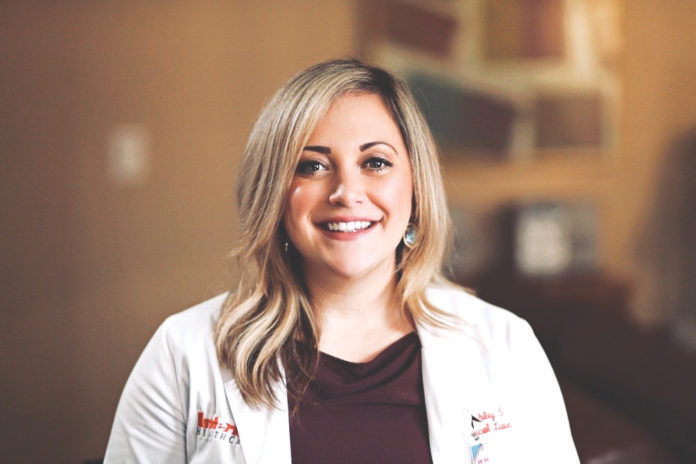
by Bobby Anderson, Staff Writer
Now, more than ever, people need quality care at home from providers who can make sense of a daily changing healthcare environment.
For more than 50 years, people have turned to Interim HealthCare for that quality, compassionate care.
Ashley Simms, LPN, has been with Interim for two of those years, serving now as the assistant manager of sales operations.
“We realize for seniors and those with serious underlying health conditions home is the best place for them to be during this time,” Simms said.
While state and local governments mandate people stay at home to flatten the curve on Covid-19, care is needed more than ever inside the home.
“I think at this time it’s so critical … because legislatively there’s a lot of focus on hospitals which is important but these patients are going to come home and somebody has to take care of them,” Simms said. “There are so many factors that go into Covid that many people don’t consider such as fear and mental health.”
Interim HealthCare offers a full suite of services including: home healthcare, hospice care, personal care and support, veteran and spouse care, palliative care, behavioral health as well as neonatal and pediatric home care.
Interim offers services in Canadian, Cleveland, Grady, Kingfisher, Lincoln, Logan, McClain, Oklahoma, Payne and Pottawatomie counties.
The care extends beyond medical.
“Our social workers work diligently to help assist patients in obtaining necessary and basic items such as food and shelter which helps to drive down fear for our patients, especially in a time of crisis like this,” Simms said.
For several years, healthcare delivery has been trending more and more to a home setting to help curb rising medical costs. That means patients are coming home quicker and sicker than they ever have before.
And the hospital penalties for patients who readmit for the same diagnosis within 30 days can be substantial.
That’s why hospitals and other facilities rely on providers like Interim to stand in the gap and make sure patients safely recover at home.
With Covid-19 forcing more and more Oklahomans to stay at home, monitoring these high risk patients and intervening before they become sick has taken on an even greater importance.
Simms said Interim has long provided telehealth options for patients for daily monitoring of things like blood pressure, oxygen saturation and weight.
“A lot of times that provides calm to those patients because they are able to see somebody,” Simms explained. “It helps us keep an eye on our patients. Due to the restrictions that have been loosened for healthcare in general right now if the patient has a smartphone we’re able to FaceTime with them.”
Being unable to get out to doctor appointments can cause a sense of panic. Simms understands that.
“We’re also trying to drive down the fear with our patients because we’re trained and we know how this process works,” Simms said. “We’re not scared and know how to take care of you. There’s a lot of fear circling. We have to be the forefront of education.”
Being able to talk to patients in their own home at their own pace is an invaluable piece of the puzzle. Simms said Interim providers are able to have those conversations that rely on facts not the latest headlines.
“I believe we do an excellent job during this scary time,” Simms said. “At the top, it’s important we support our nurses. I think being the calm in the storm is what we do best. Before Covid, we took high-risk patients.”
“Because that’s already our platform, Covid was just a step up for us. We’re able to educate why (a patient) might be at more risk. We’re able to take that time, take those precautions and provide that education.”
Interim is locally owned and part of a national network of more than 300 offices.
Employing more than 75,000 healthcare workers, Interim provides care to more than 50,000 patients each day.
Simms explained Interim revolves around key concepts including: preparation and training, monitoring and reporting, alternative methods of care, high standards of safety and an emergency preparedness plan.
And in these trying times, Simms said Interim has made it a greater focus to love on its frontline staff.
From lunches and breakfasts to special personal protective equipment including floor mats and car seat covers, Interim is protecting those who protect us all.
“At Interim we believe we are all in this together and I think being the calm in the storm is what we do best.”
GREG SCHWEM: Face it, all your photos have that ‘pandemic’ look
by Greg Schwem
The ongoing stay-at-home order has forced most of us to seek amusement by posting photos of ourselves from bygone eras to our social media accounts.
“Share your high school senior picture” was trending last week; a challenge I was about to undertake until I read how doing so could invite hackers to glean more information about me, such as where I attended school, where I currently lived and who did such a horrible job cutting my hair in 1980.
Security experts also warned that more information could be easily obtained once this information was known, as many people choose to use their high school as a security answer or worse, their password. Those of you who attended Catholic schools need not worry; even the most skilled hacker is probably going to give up before guessing, “AcademyOfOurLadyOfGoodCounsel1994.”
Despite not participating, I enjoyed seeing these throwback photos, from graduation and other events, posted by friends. Did everybody in the 1970s wear thick, black horn-rimmed glasses and look like they worked for the Apollo space program?
Ladies, if you attended college in the early 1980s, did the law require you to part your hair down the middle and then feather it back with enough aerosol to start a salon?
And guys, did you not realize that only David Coverdale, from Whitesnake, and Jon Bon Jovi could pull off the big hair, pompadour look? The rest of you had that “just exited a wind tunnel” look.
Tom, my long-time comedian friend in New York, often reminds me why he has never jumped on the fashion bandwagon. “The hipper your clothes are today, the more ridiculous photos of you are going to look in 20 years,” he says on stage.
I won’t argue.
When scientists find a vaccine for COVID-19, the “all clear” signal is given, and life returns to whatever is subsequently defined as “normal,” we will all be left with treasure troves of photos taken during the pandemic. And in future decades, when those photos find their way into school history books (assuming schools and books still exist) or onto social media sites, viewers won’t need to look at a hairstyle, a car in the background or an item of clothing to determine the photo was indeed shot in 2020.
For starters, the viewer only has to see the photo’s dimensions. It will most likely be shot vertically, with a 9-by-16 aspect ratio. The photo will contain only one subject. Correction, one HUMAN subject. Animals may be included, but more people? Absolutely not, for they will all be standing at least 6 feet away and, therefore, out of frame.
The subject will be wearing sweatpants and a faded T-shirt containing some semblance of the slogan, “We’re All in this Together.” He or she will be shoeless. Men will have facial stubble; sadly, so will some women. Hairstyles won’t have complimentary names like “The Rachel,” “Charlie’s Angels” or “The David Hasselhoff.” Instead, all hair will fall into the “Dang, That Should Have Been Cut Weeks Ago” category.
Photos of celebratory occasions will feature one participant, perfectly centered, wearing a “Happy Birthday” or “Congratulations” party hat, while grainy, square images of others hover overhead. The word “Zoom” will appear somewhere.
The “guess where this photo was taken” game will be boring once everybody realizes the answer is always the same: “Uh, your house?” Kids who play sports won’t appear in photos wearing brightly colored uniforms while baseball diamonds and soccer fields glisten behind them. Instead, the background will be a basement wall or a garage door. Youth basketball players, take heart: At least the vertical photos will make you look taller than you are.
Since the stay-at-home order began in mid-March, I have neglected to take many photos, so anxious am I to erase this moment from my life, rather than record it for future viewing. I did break down last weekend and post a selfie, snapped while my wife cut my hair. The pandemic, I realized, would not date it.
Trust me, even without a global health crisis, that image is horrifying and depressing.
(Greg Schwem is a corporate stand-up comedian and author of two books: “Text Me If You’re Breathing: Observations, Frustrations and Life Lessons From a Low-Tech Dad” and the recently released “The Road To Success Goes Through the Salad Bar: A Pile of BS From a Corporate Comedian,” available at Amazon.com. Visit Greg on the web at www.gregschwem.com.)
You’ve enjoyed reading, and laughing at, Greg Schwem’s monthly humor columns in Senior Living News. But did you know Greg is also a nationally touring stand-up comedian? And he loves to make audiences laugh about the joys, and frustrations, of growing older. Watch the clip and, if you’d like Greg to perform at your senior center or senior event, contact him through his website at www.gregschwem.com)




